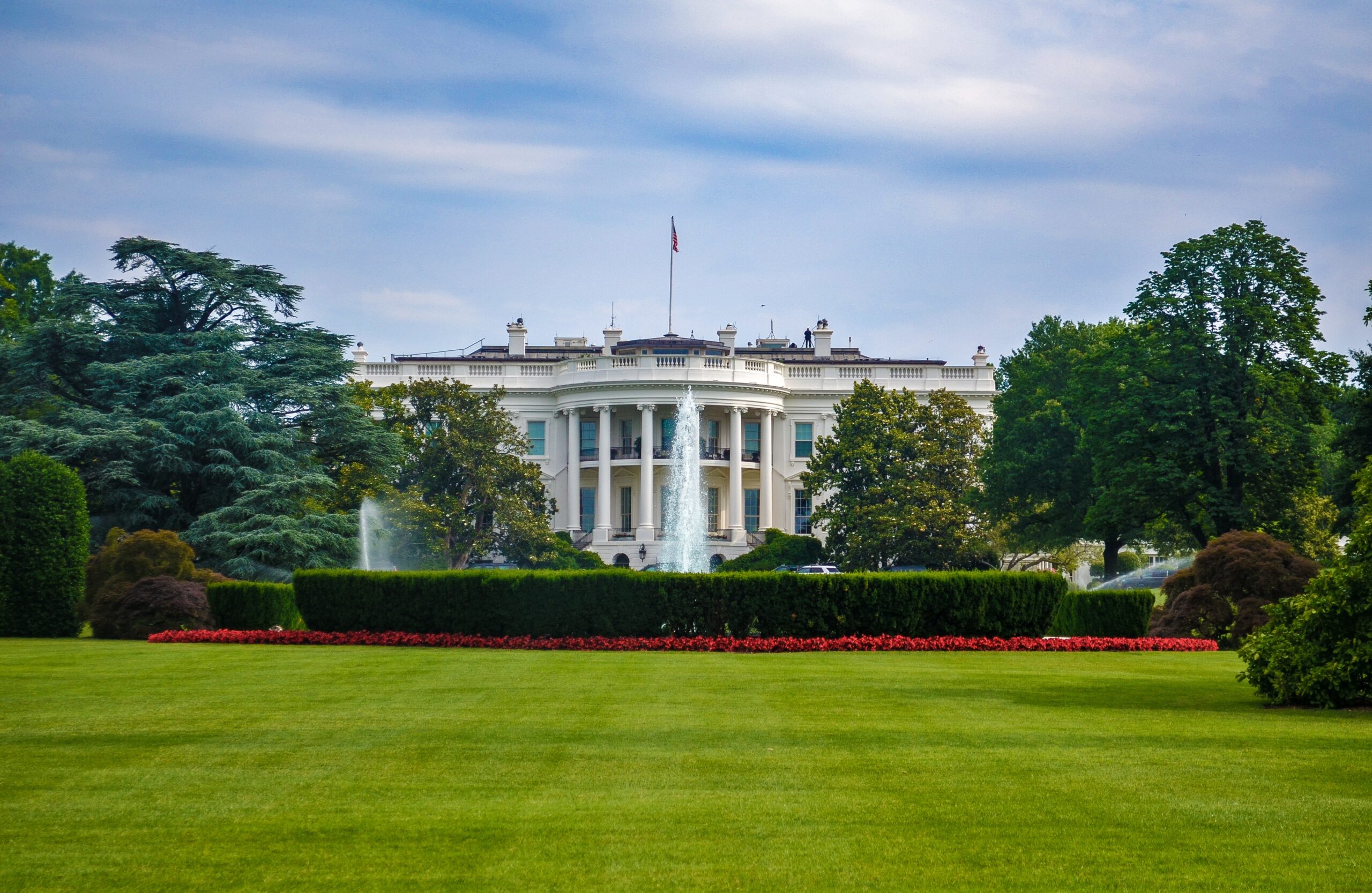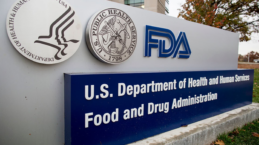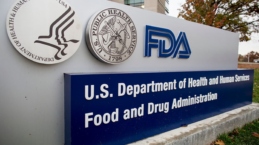

insights
Safety, Efficacy, and Politics: FDA and a New Presidential Administration
From the onset of the COVID-19 pandemic, the world has witnessed a dramatic competition of perspectives relating to the global health crisis. In turn, the US Food and Drug Administration (FDA) has been thrust into a volatile public debate pitting science versus politics. This evolving landscape has invited a few of us here at Halloran to pause and take a closer look at the relationship between the White House and the FDA, and what we may expect over the next four years with Joe Biden at the helm.
Let’s zoom out for a moment to understand the FDA’s role within our country’s political structure. The FDA’s product approval and authorization decisions are informed by data required to clearly demonstrate safety and efficacy, but the FDA must also balance the risk and benefit considerations in light of disease severity and medical need, like what we experienced in the wake of COVID-19.
Both Congress and the Executive branch exercise influence over the FDA, while the courts serve as a check on FDA authority. Congress sets the FDA’s budget and establishes the legal parameters for the FDA’s decisions, while the President has the power to appoint (with confirmation by the Senate) and remove the FDA Commissioner. Take Janet Woodcock, for example, who was appointed as Acting FDA Commissioner since President Biden took office, but, in light of the recent controversy over her involvement in the approval of Biogen’s aducanumab, he is now ruling out nominating her as permanent head of the FDA. Additionally, the Secretary of the Department of Health and Human Services (HHS), also a presidential appointee, has legal authority to override the FDA’s rulemaking and approval decisions, while the White House has the authority to block FDA regulations and guidance.
When balancing these two worlds – appointed officials, like the FDA Commissioner who may have interests in advancing the political goals of the administration that appointed them, an independent scientific review – the question is ‘how do politics affect the FDA and how should the FDA respond to political considerations and influence?’
Members of our regulatory team recently attended a webinar “The Biden Administration’s FDA: The First Six Months and What to Expect for the Rest of the Year,” and we found four key initiatives that will continue to develop over time – accelerating biosimilars to improve access and affordability to prescription drugs, navigating trial inspection delays for non-mission-critical work, innovative approaches to combat the opioid epidemic, and the rise of digital health products – that are worth taking a deeper dive.
These four initiatives, though not all reviewed in President Biden’s campaign leading to his appointment, are essential for the country to work towards over the next four years as they will help us reach more affordable health care, contribute to innovation, and battle an epidemic that has taken a hold of many communities.
Improving Access and Affordability to Prescription Drugs with Biosimilar Development
It comes as no surprise that the Biden administration has called on Congress to improve access and affordability to prescription drugs. One element of this mission is focused on accelerating the development and uptake of generic drugs and biosimilars. While the FDA approved more than 1,000 generic small-molecule drugs in 2019 alone. To date, the FDA has approved only 29 biosimilar products. This stark contrast results, in part, from the significantly increased complexity relating to the manufacturing of biosimilar products and the corresponding regulatory pathway(s) for approval.
Like generic small-molecule drugs, biosimilars are approved through abbreviated regulatory pathways that obviate certain requirements applied to New Chemical or Biological Entities (NCEs and NBEs, respectively). However, unlike small-molecule generic drugs, and as implied by name, biosimilars cannot be chemically synthesized to generate Active Pharmaceutical Ingredients identical to the reference product(s); due to the complexity of biologics this is simply not possible. Consequently, biosimilars are required to demonstrate a “high degree of similarity” relating to the physicochemical properties and biological activity between the biosimilar and reference product.
Still, even when biosimilar products can demonstrate this high degree of similarity (no small feat), they are not considered “interchangeable” with the reference product; the regulatory burden of proof to demonstrate interchangeability is even greater. Ultimately, a product approved as an interchangeable means that FDA has concluded it may be substituted for the reference product without consulting the prescriber (as would be required for a biosimilar). To claim interchangeability Sponsors must demonstrate that their product generates the same clinical results as the reference product in any given patient and that no change (to safety and efficacy) occurs when switching between products.
FDA approved the first biosimilar interchangeable product (Semglee®), used to improve glycemic control in adults and pediatric patients with Type 1 diabetes mellitus and in adults with Type 2 diabetes mellitus) in July of 2021. As FDA works to facilitate further development and approval of biosimilar and interchangeable products, the industry continues to pursue more complex protein therapeutics and novel manufacturing technologies, presenting new regulatory challenges. To keep pace, the FDA plans to release a new guidance to pave the way for more accessible development and marketing of these products. This webinar hinted at three primary agenda items pertaining to biosimilar product development:
- Product Class-Specific Recommendations for Developing Biosimilar and Interchangeable Biological Products
- In 2020, the FDA transitioned insulin products (amongst others) to be regulated as biologics (from the prior regulation under the FD&C Act). This move enabled these drugs to serve as the reference product for biosimilar or interchangeable drugs approved via abbreviated pathways (under the BPCI Act). The Webinar presenters speculated that the focus on drug pricing for insulin products makes these products likely candidates for inclusion in this new guidance
- A Revision: Labeling Guidance for Biosimilars
- FDA Guidance “Labeling for Biosimilar Products,” released in 2018, is flagged for revision. Webinar presenters indicated that FDA is very concerned about reference product advertising that would suggest liabilities associated with a corresponding biosimilar. Therefore, it stands to reason that this revision may address these concerns. “Skinny labeling” or the practice of seeking approval (for a biosimilar) for only a sub-set of the indications for which the branded drug has been approved, may also be within scope for this revision thereby building on the draft guidance released in 2020 “Biosimilars and Interchangeable Biosimilars: Licensure for Fewer Than All Conditions of Use for Which the Reference Product Has Been Licensed Guidance for Industry”
- Potential Draft Guidance on Exclusivity for Interchangeable Biologic Products
- With the first interchangeable products now coming to market, the webinar presenters suggested that draft guidance in this context may improve clarity relating to key elements of exclusivity, a key element to promoting development efforts in this space
Despite the significant challenges facing biosimilar and interchangeable products, the potential for these therapeutics promises a significant price reduction for payers and patients. The new Administration is motivated to find ways to facilitate the path to market to promote the continued development of these products. We expect to see the continued focus in this area for years to come.
What to Expect from the Clinical Trial Inspection Bottleneck?
Since the spring of last year, there has been a bottleneck in foreign and U.S. clinical trial inspections, resulting in nearly 8,000 inspections put on pause. As a result of the COVID-19 pandemic, vaccine and COVID prevention and treatment development has been the top priority in order for the FDA to address the public health crisis.
As of March 2021, there were 68 applications – including 48 for human drugs – that have been delayed due to the FDA’s prioritization of pandemic-related inspections and inability to conduct timely pre-approval, pre-market or pre-license inspections. As a recent trend, most of the inspections that have been conducted, in large part, have been done remotely. Some trial Sponsors prefer remote inspections and are embracing inspection enabling technology, like a GoPro, that allow for a slow showing of their operations with good quality technology.
To help reduce the backlog of non-priority inspections, it may be possible that remote inspections will continue well into the future. The technology is present and there is a major reduction (if not an elimination) of travel time for the inspectors. Some webinar panelists even suggested that remote inspections will become common practice moving forward and that FDA is likely to invest in technologies that facilitate secure sharing of confidential and highly sensitive operational information and data.
New Technologies and Strategies to Address the Continued Opioid Epidemic
Over the course of the pandemic, the number of opioid-dependent individuals and overdoses has increased. 81,000 drug overdose deaths occurred in the U.S. in the 12 months ending in May 2020, which is the highest number of overdose deaths ever recorded in a 12-month period.
For the fiscal year 2022, the FDA has requested a $38 million increase for opioid-related work. To address the continued crisis, the FDA has identified four priority strategies, which are to decrease exposure and prevent new addiction, support the treatment of those with opioid use disorder, foster the development of novel non-opioid pain treatment therapies, and improve enforcement. The FDA also wants $10 million to establish satellite labs at international mail facilities to prevent illicit opioid packages from entering the country.
Because the opioid epidemic is a profound public health crisis and requires innovative approaches, the FDA has also taken a major step by launching a new challenge – the FDA Innovation Challenge: Devices to Prevent and Treat Opioid Use Disorder. This challenge has awarded eight companies the ability to work more directly with the FDA to accelerate the development and expedite marketing application review of their innovative products. These new products were designed to predict the risk of opioid use disorder, detect opioid overdose, dispense medication or provide pain treatment alternatives to opioids. One of these products was the Deep Transcranial Magnetic Stimulation (DTMS) Device being developed by Brainsway, which is already FDA cleared for the treatment of Major Depressive Disorder (MDD), Obsessive Compulsive Disorder (OCD) short-term Smoking Cessation and Anxious Depression.
There have been other important product development to date. For example, in 2017, FDA cleared the NSS-2 Bridge device, which is a small electrical nerve stimulator placed behind the patient’s ear. This device emits electrical pulses to stimulate branches of certain cranial nerves and may provide relief from opioid withdrawal symptoms. Non-invasive medical devices such as these may be a desirable alternative to Medication Assisted Treatment (MAT) for opiate addiction and withdrawal.
The FDA is also focusing on increasing the number of overdose reversal treatments. On April 30, 2021, FDA approved the highest dose naloxone hydrochloride nasal spray to treat opioid overdose. This spray is now available as 8 mg, 2 mg, and 4 mg spray products.
Halloran looks forward to the FDA’s continued focus on non-opioid pain treatment therapies and issues associated with opioid use disorder or addiction. Opioid use disorder is a public health emergency with diverse treatment options that the biopharma and medical device industries must work to develop and promote.
The Rise of Digital Health – The Pros and Cons
COVID-19 disrupted many clinical trial operations; however, this pandemic showed this industry the possibilities of rethinking digital health infrastructure and how clinical trials may be conducted. During the COVID-19 pandemic, telehealth – the remote provision of clinical care – became a common route for patients to seek treatment from their medical providers.
While telehealth was certainly available pre-pandemic, the FDA showed its continued support for remote technology and the drive for a revolution in health care during the crisis. In April 2020, overall telehealth utilization for office visits and outpatient care was 78 times higher than in February 2020, due to the rapid shift to virtualization as a result of the pandemic. The benefits of remote access care are vast and they include, but are not limited to:
- A reduction of disease exposure for staff and patients
- Preservation of scarce supplies of personal protective equipment (PPE)
- Reduction of patient demand on on-site facilities
In large, telehealth is efficient and cost-effective and is easy on resources. What once was a foreign idea is now paving the way for broader availability in medical treatment and hesitant Sponsors are now seeing the application and value of such technology. As the telehealth concept is digested by patients and providers, companies also need to be aware of protecting patient data, but also protecting patient privacy.
Cybersecurity is a common threat that everyone faces and companies need to be aware of the ever-evolving threats from hackers. Telehealth is a target in cyberspace because it’s an easy target, a valuable target (personal health information [PHI] commands a high price on the black market), and there are more than a few targets (325,000 mobile health apps are currently in existence).
With such threats, it’s essential that Sponsors ensure they have the resources, processes, and training in place since they are the ultimate custodian of their clinical trial data. For more insight on assuring clinical data integrity, click here.
Support for Digital Health
An exciting advancement in the digital health space is the recently launched Digital Health Center of Excellence (DHCoE) by the FDA in late 2020. The goal of the DHCoE is to empower stakeholders to advance health care by fostering responsible and high-quality digital health innovation.
The DHCoE aims to connect and build partnerships to accelerate digital health advancements, share knowledge to increase awareness and understanding, drive synergy, advance best practices, and lastly, innovate regulatory approaches to provide efficient and least burdensome oversight while meeting the FDA standards for safe and effective products.
The DHCoE does not have the responsibility of authorizing applications or clearing applications; instead, the DHCoE is more intended to be a hub of knowledge of digital health initiatives, digital health resources, and digital health tools for both the industry and the FDA. The creation of the DHCoE has assisted the FDA in relaying its focus, its efforts, and its resources on digital health to ensure the industry is growing in the right direction.
Closing Remarks
Looking forward into the next four years, the Biden administration has set ambitious goals to improve affordability and access to life-saving medications, launch new initiatives to develop regulatory frameworks that keep pace with technological advancements and to resolve critical health crises both longstanding (e.g., opioid epidemic) and those resulting from COVID-19.
The administration is embarking on this mission in an unprecedented time, when the relationship between the White House and the FDA has taken center stage. While the initiatives summarized herein are undoubtedly positive developments for our country, their success will likely rely on the Biden administration’s ability to work effectively with FDA over the full course of his term.




